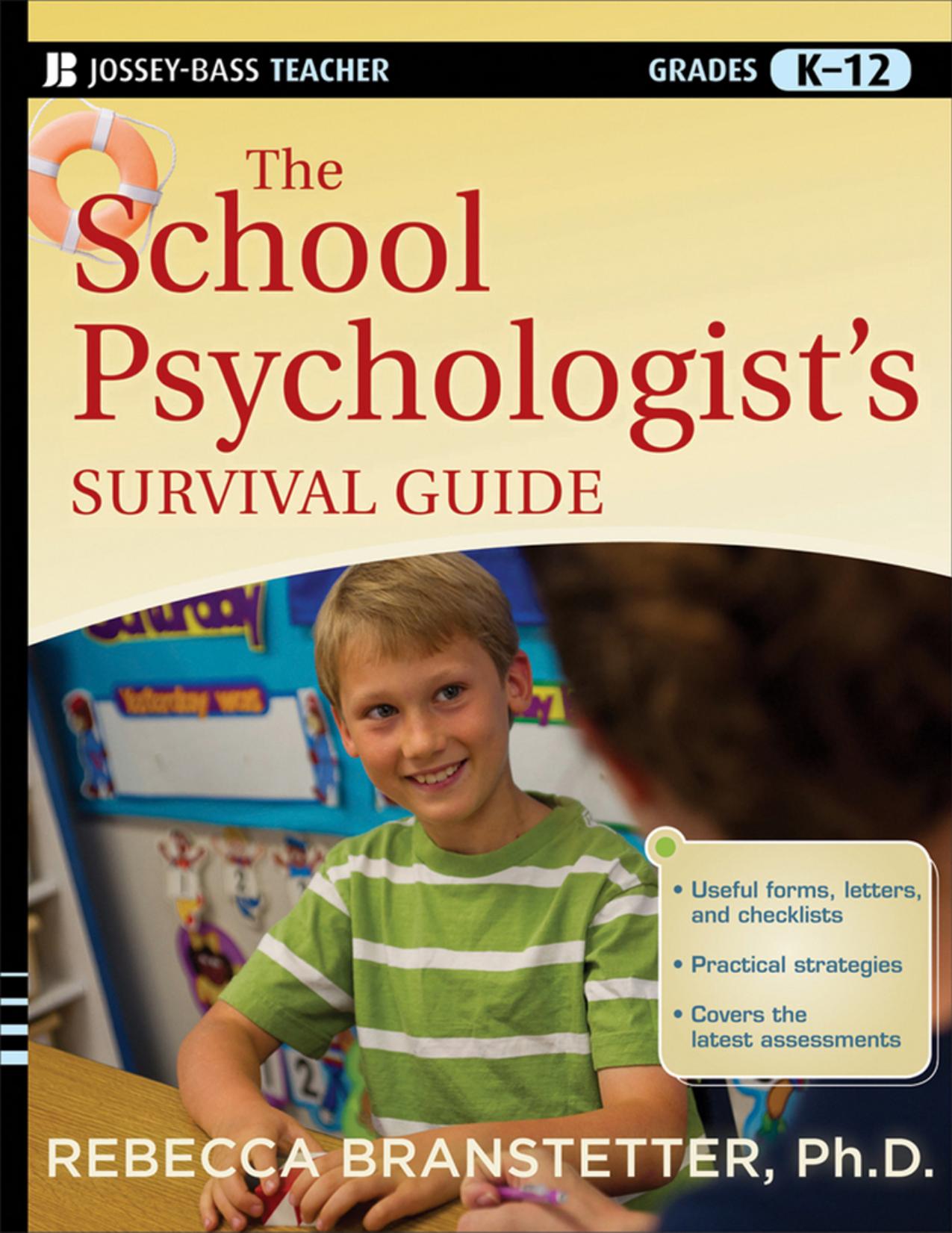The School Psychologist's Survival Guide by Rebecca Branstetter

Author:Rebecca Branstetter [Branstetter, Rebecca]
Language: eng
Format: epub, pdf
Tags: General, Education, Educational Psychology, Special Education
ISBN: 9781118027776
Publisher: Jossey-Bass
Published: 2012-05-01T07:12:09+00:00
DURING THE IEP MEETING
If you have ever been to an IEP meeting that lacks an agenda or “road map” for how information will be presented, you know it can be a very long and possibly unproductive meeting. For parents, not knowing what will be discussed at the meeting can also be an anxiety-provoking experience. That is why I recommend that at the outset of the meeting, you give parents an overview of what you will be presenting. If you just launch into findings, the parents and support staff will not know where you are going or what the findings mean for them or the child.
Laying the Groundwork for Presenting Results
I usually start with a brief introduction to special education eligibility and the role of the school psychologist, using my “thirteen doors” speech. The speech goes something like this:
Thank you for coming today. I am eager to present the results of how your child learns best and to develop a plan together to support your child. While our school has supports in the general education environment, it is our job to see if your child is eligible for additional special education supports. In order to be eligible, a child must have both a documented disability and evidence that his or her needs cannot be met in general education with supports.
There are thirteen “doors” into special education. Each door represents a disability category. Once a child is in through that door, the team decides what the most appropriate plan is for the student. The door he or she goes through does not always dictate which services or placement a child will get. Special education is not a place, but rather a tailored program for each child based on his or her learning profile and which door or eligibility category best fits the student. [Speech changes based on referral question.] Given the information from the team’s initial meeting, we were particularly interested to see if your child has [list areas of suspected disability]. Those are [number] possible doors into special education services. There were other doors I did not look into, but I can say that some students also have [list areas of disability that do not apply] that result in special education eligibility. Our speech therapist looked into the door of speech and language impairment and will present later [if there was a speech and language area of suspected disability]. I focused on your child’s areas of suspected disability. First, I will address the question of [insert first suspected disability].
At this point, you would briefly explain the criteria for each area of suspected disability to lay out the road map for what your findings mean. It gives parents and teachers a mental “file” for the information you are about to present. I also bring along with me a copy of the normal curve (see Figures 7.1 and 7.2, in English and Spanish, respectively) and point to the areas as I talk about the descriptors. I give a very brief overview of the difference between standard scores, scaled scores, T-scores, and percentiles.
Download
The School Psychologist's Survival Guide by Rebecca Branstetter.pdf
This site does not store any files on its server. We only index and link to content provided by other sites. Please contact the content providers to delete copyright contents if any and email us, we'll remove relevant links or contents immediately.
The Art of Coaching Workbook by Elena Aguilar(50127)
Trainspotting by Irvine Welsh(21043)
Twilight of the Idols With the Antichrist and Ecce Homo by Friedrich Nietzsche(18308)
Fangirl by Rainbow Rowell(8805)
Periodization Training for Sports by Tudor Bompa(7929)
Change Your Questions, Change Your Life by Marilee Adams(7385)
This Is How You Lose Her by Junot Diaz(6458)
Asking the Right Questions: A Guide to Critical Thinking by M. Neil Browne & Stuart M. Keeley(5362)
Grit by Angela Duckworth(5303)
Red Sparrow by Jason Matthews(5203)
Paper Towns by Green John(4808)
Room 212 by Kate Stewart(4742)
Ken Follett - World without end by Ken Follett(4449)
The Sports Rules Book by Human Kinetics(4081)
Housekeeping by Marilynne Robinson(4070)
Double Down (Diary of a Wimpy Kid Book 11) by Jeff Kinney(3936)
Papillon (English) by Henri Charrière(3919)
The Motorcycle Diaries by Ernesto Che Guevara(3791)
Exercise Technique Manual for Resistance Training by National Strength & Conditioning Association(3790)
